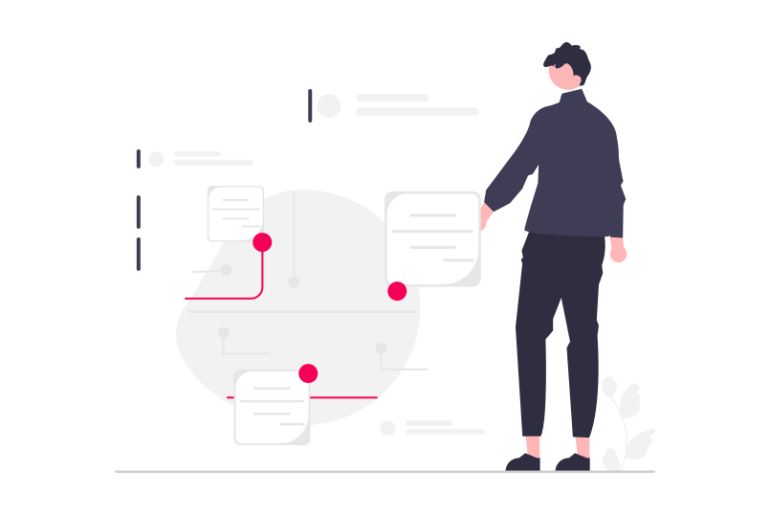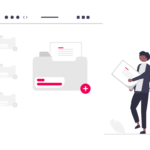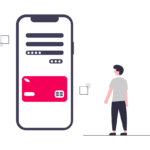Are you looking forward to increasing your ad revenue through ad automation? We have the perfect guide for you. From A/B testing to personalization, in this blog, we will take you through the top 10 strategies to help you strengthen your ad automation efforts.
Digital advertising is an ever-changing industry. From time and time again, we have seen a plethora of advancements in the industry, and ad automation is one of them.
Ad automation is one of the most powerful things you can do to increase conversions on your website. Although requires only a little technical expertise, it is often overlooked.
If you want to improve your conversion rate, here’s a list of ad automation strategies to get you started. In this blog post, we have shared ten strategies to help you start automating your ads in less than an hour.
Before we get into that, let’s first quickly understand what is ad automation.
What is Ad Automation?
As the name suggests ad automation is the use of software and different technologies to automate different areas of your ads on the web. Since this automation of ads makes the process much more efficient, effective, and scalable, it helps advertisers save a considerable amount of time and effort.
In fact, automating your marketing efforts can lead to fruitful results. According to Oracle, the number of leads increases by almost 80% for those relying on automation. There is a lot more than that. Take a look.

Also Read – Ad Layout Optimization and Ad Layout Personalization
Thus, for someone who is looking to generate better returns from their ads, using ad automation tools is important. But it goes without saying, to get the most out of ad automation tools, you need to have a good understanding of the strategies involved and be well-versed in using the tools themselves.
Importance of Ad Automation Strategies
Ad automation plays an important role in conversion rate optimization. Nowadays, most websites use Ad automation software.
Ads are one of the most important elements of any online business. It helps the business generate more leads and income.
However, several factors should be considered while designing ads. Ideally, these ads should encourage visitors to take action, such as purchasing a product, subscribing to the website, etc.
Without further ado, let’s now take a look at the top 10 ad automation strategies.
How to Use Ad Automation to Increase Conversion?
There are a variety of ways you can use ad automation to increase the conversion of your ads:

1. Automated Ad Scheduling
According to Michael Nemeroff, the CEO, and Co-Founder of Rush Order Tees, automatic ad scheduling is a great way to ensure the display of ads at the right time.
This is especially effective for e-commerce businesses, where customers may purchase products at different times during the day.
For example, if you run an e-commerce site that sells jewelry. You could create an automated ad schedule that triggers your ads to show up when your ideal customer is browsing for jewelry items online.
2. Dynamic Ads
Second, you can set up your ads to show up in different places based on user behavior. Dynamic ads allow marketers to target users with personalized messages depending on whether they’ve visited your site.
For example, if a user hasn’t visited before but has recently started shopping there again after a break, send them an offer they might find useful (like special discounts).
3. Perform A/B Testing
Thirdly, you can use automation strategies like A/B testing to determine which version of an ad performs better.

For example, try showing one version at a time while tracking user engagement data (how many people clicked through each version), and then identify which version performed better.
Also Check – 10 Essential A/B Testing Best Practices for Publishers
4. Remarketing
Remarketing is simply re-engaging a viewer who has already visited your site.
Remarketing ads are great because they let you keep in touch with someone who might have shown interest in your product but never converted.
Who better to convert than people who’ve already shown interest before? Pulling the trigger on purchases takes time and patience.
5. Targeting
As a publisher, understanding your target audience is vital. It’s the practice of using data to target demographics or interests in order to find the right person on the right device at the right moment.
“Targeting allows you to hone in on your ideal audience, which is important if you want to increase conversions. For example, if you’re selling shoes, you may want to target people who live in the city, have a job, and earn $150,000 per year. Through this data, you can create more personalized ads and messages that will appeal to these people.”
– Mark Pierce, CEO of Cloud Peak Law Group.
6. Personalization
Personalization means tailoring ads based on a user’s interests and behaviors. For example, if you’re selling shoes, you could target someone who has recently purchased a pair of running shoes but doesn’t own any other dress footwear.
7. Scale Good Campaigns
- Automated marketing campaigns are a great way to scale your marketing efforts and reach many people.
- You can automate the work you would have otherwise done manually.
- This saves you time and energy and allows you to focus on more important things.
- You can also use automation to track and measure the success of your campaigns.
10. Pause Weak Campaigns
Just as automation instantly allows marketers to scale good campaigns, it can also help pause bad campaigns. In other words, it works on both ends and saves you time and money.
Also Read – 4 Proven Ways to Boost the Performance of your Ads
9. Optimize Landing Pages
There is a strong connection between high-quality, well-optimized landing pages and successful ad campaigns. Daniel Apke, CEO of Land Investing Online, says:
“Well-designed and easy-to-navigate landing pages help your visitors find the information they’re looking for and convert them into leads or customers.”
In short, you’ll be able to generate more leads and sales with minimal effort. Automated marketing campaigns are a great way to scale your marketing efforts and reach many people.
More Tips to Optimize Landing Pages:
- Write a compelling headline that grabs attention, starts a conversation, and tells a story.
- Write an engaging description that tells your potential customer what your product does, how it does it, and why they should care.
- Use an eye-catching image and preferably a video to tell your story.
- Use a call to action button that prompts your visitors to click on your ad and take the next step in your funnel.
- Use multiple ads to test different headlines, images, videos, call-to-action buttons, and copy until you find the best-performing ad combination.
- Test different audiences to find your ideal customers.
- Automate your ads, so they’re always running, and you only pay when a visitor clicks on your ad and visits your website.
- Use retargeting ads to follow up with website visitors who did not convert the first time they visited your site.
- Use dynamic ads to automatically show different ads to different visitors based on who they are, what they’ve searched for, or what other pages they’ve visited on your website.
- Use google audience insights to find additional keywords in your copy and ads.
Also Read – Landing Page Optimization: 8 Tips To Boost Your Conversion Rate
10. Focus on Retention
Retention is the key to a successful ad campaign. The more users you retain, the higher your chances of converting are. Ad automation can help you achieve this by automating the tedious and time-consuming tasks that hamper your retention efforts.
We hope by now you have got a fair idea of different ad automation strategies. But, that’s not enough. It’s equally important to know how to choose the right ad automation tools.
Now you must be wondering what ad automation tools are. Don’t worry, we’ve got you covered.
What are Ad Automation Tools?
Ad automation tools are software platforms, which are used to automate the process of creating, running, and managing advertisements across the web. These tools typically use algorithms and machine learning models to analyze data and optimize ad performance in real time. For example, an ad automation tool can automatically adjust bidding strategies according to user behavior, ad placement, and other factors in order to increase ROI.
How to Choose the Right Ad Automation Tools?
It’s important to narrow down plenty of options out there and single out an automation tool that works best for your business. First, let’s quickly take a look at what are ads automation tools are.
According to Jerry Han, CMO of Prize Rebel:
“When evaluating professional ad automation tools, you need to look for tools that integrate seamlessly with your current technology platform and enable you to easily create and manage ads across multiple media channels, including search, social, and mobile.”
Here are a few of the factors you should take into account.
Advertising Platforms
There are numerous ad automation platforms out there. But, different ad automation tools are built to work on different advertising platforms. So make sure the one that you choose to rely on works on your ideal advertising platform.
For example, if you’re looking forward to advertising on Facebook or Instagram, make sure that your preferred tool can support them.
Decide Your Budget
Before choosing an ad automation tool, it’s important to determine your budget. This will help you narrow down your options and avoid wasting time on tools that are out of your price range. Once you’ve established your budget, research and compare different tools to find the one that offers the features and functionalities you need at a price point that fits within your financial constraints.
Identify Your Goals
Different ad automation tools may offer features that align with specific advertising goals. This can include driving website traffic, increasing conversions, or building brand awareness. Thus, first, identify your advertising goals and choose a tool that offers the features and functionalities that align with those goals.
User Experience
One of the most important factors to consider is the user experience. Check out the user experience of different ad automation tools and see if that is something you can use easily on a daily basis. Are they user-friendly and easy to navigate? Do they offer customer support and resources to help you get started? Make your choice wisely.
Features and Functionalities
Not all ad automation tools come with the same features and functionalities. Some tools may offer many features like ad creation, bid optimization, and reporting, while some may lack certain features. Before relying on any ad automation tool, perform thorough research, and make sure its features align with your strategy.
Conclusion
One of the best ways to improve your ads’ success rate is to improve how they are shown to potential customers.
Many times, businesses run their ads without knowing how their ads perform. With automatic advertising, you can automate ad targeting so that your ads perform better.
Automation allows you to target people interested in your products and services. You can then get your message in front of them quickly and consistently.
Ad Automation makes it possible for businesses to keep up with customer demand. As your business grows, you can scale your automated advertising campaigns so that you can stay in touch.
Frequently Asked Questions – Ad Automation
Ad automation is the use of software and technology to automate and optimize advertising processes, such as campaign creation, targeting, bidding, and reporting.
Yes, ad automation is definitely worth it, especially for small business owners who lack resources or do not have a marketing team. It saves time and effort and at the same time brings fruitful results.
Eliminating the guesswork, automation in Facebook recommends personalized ads for advertisers. Advertisers need to provide brands with the information, and then Facebook suggests several personalized ads. It also looks for what works best for your ad and provides the advertisers with suggestions for improvement.

Deepak has a keen eye for detail and a deep understanding of the ad tech landscape. Whether it’s through in-depth articles, thought-provoking insights, or compelling storytelling, he’s dedicated to helping people navigate the complex world of ad tech with the simplicity of his words.




![CTV vs OTT Advertising: Which one is Right Pick for Publishers? + [6 Bonus Strategies] Ott vs Ctv](png/featured-image-270x180.png)


